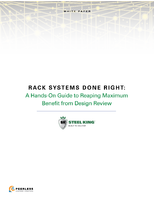Moisture Conditioning Standard looks at compacted asphalt.
Press Release Summary:
ASTM International Committee D04 on Road and Paving Materials is working on ASTM WK32764, Practice for Moisture Conditioning Compacted Asphalt Mixture Samples by Using Hydrostatic Pore Pressure. This proposed moisture conditioning method for compacted asphalt samples is time-efficient and allows for simulation of field conditions. Testing device described in ASTM WK32764 emulates action of vehicle tire on wet pavement via generated pore pressure inside compacted asphalt sample.
Original Press Release:
ASTM Road and Paving Committee at Work on Proposed Moisture Conditioning Standard for Compacted Asphalt Samples
W. CONSHOHOCKEN, Pa.-ASTM International Committee D04 on Road and Paving Materials is currently at work on a proposed moisture conditioning method for compacted asphalt samples that is both time-efficient and allows for the simulation of field conditions. ASTM WK32764, Practice for Moisture Conditioning Compacted Asphalt Mixture Samples by Using Hydrostatic Pore Pressure, is under the jurisdiction of Subcommittee D04.22 on Effect of Water and Other Elements on Bituminous Coated Aggregates.
"When a tire goes over a wet pavement, water is initially pushed into the asphalt pores and is then pulled out as the tire lifts off the pavement," says Ali Regimand, president, InstroTek Inc., and an ASTM member. "Water movement in and out of the voids creates pore pressure within the mixture and can cause liquid asphalt (binder) to strip from aggregates. Loss of bond between aggregates and binder could result in aggregate raveling and premature moisture damage on pavements."
Regimand says that the testing device described in ASTM WK32764 emulates the action of a vehicle tire on a wet pavement by generated pore pressure inside a compacted asphalt sample. Mixtures can be tested for moisture damage susceptibility, prior to laying down a pavement, in an enclosed water filled chamber.
"This test can help engineers design mixtures that are less moisture sensitive and since results can be obtained relatively fast, technicians and agencies can use the device described in the proposed standard for quality control, before, during and after construction," says Regimand.
ASTM International welcomes and encourages participation in the development of its standards. For more information on becoming an ASTM member, visit http://www.astm.org/JOIN.
ASTM International is one of the largest international standards development and delivery systems in the world. ASTM International meets the World Trade Organization (WTO) principles for the development of international standards: coherence, consensus, development dimension, effectiveness, impartiality, openness, relevance and transparency. ASTM standards are accepted and used in research and development, product testing, quality systems and commercial transactions.
View this release on the ASTM Web site at www.astmnewsroom.org.
ASTM Committee D04 Next Meeting: Dec. 6-8, 2011, December Committee Week, Anaheim, Calif.
Technical Contact: Ali Regimand, Instrotek Inc., Raleigh, N.C., Phone: 919-875-8371; aregimand@instrotek.com
ASTM Staff Contact: Daniel Smith, Phone: 610-832-9727; dsmith@astm.org
ASTM PR Contact: Barbara Schindler, Phone: 610-832-9603; bschindl@astm.org




